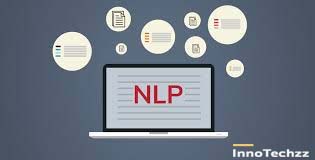What is NLP and How it Works?

Natural language processing (NLP) is an interdisciplinary topic that combines computer science and linguistics to reach artificial intelligence's end goal of machine learning. Simply said, it enables computers to comprehend human language, whether it is spoken or written.
The ability to automatically receive, understand, and operate on human language in its raw written or spoken form is known as natural language processing (NLP).
Consider the human communication loop: a sender encodes a message using a medium (spoken or written word), and the receiver decodes the message and reacts with feedback, whether it's an answer or a simple acknowledgement.
Computers must use the same communication loop, which has a lot of grey space in terms of message reception and decoding.
In this post, we'll look at the latest developments in natural language processing, as well as the products that have been created using it, and how marketers may take advantage of it. Continue reading or go straight to our infographic for a quick overview.
Why Natural Language Processing Is So Difficult?
Structured data processing is a strong suit for computers. Language, on the other hand, is about as unstructured as data gets.
Linguistics and the endeavour to structure language is a complete topic of scientific study in itself. Unfortunately, when it comes to real-world language, the laboratory is manned by regular people, making uniformity nearly impossible.
How NLP Works?
In order to generate a parse tree, which identifies the components of speech within a phrase, computers must first be trained on the language's grammatical rules. Simple inquiries and commands can be processed with a high rate of success once computers understand the fundamental basics of the language's conventions.
A new set of issues arises when the language input is spoken rather than written. This problem has come to be known as voice recognition.
Speech Recognition
It is incredibly difficult for computers to "hear" speech and analyse the content being communicated. When you ask Siri, Alexa, or Google a question, the audio is compared to millions of other audio files that have been labelled as correct to see if it matches what the speaker meant.
However, the computer must first learn to distinguish between vowels and consonants. The computer microphone picks up the audio and plots the amplitude of each sound's frequencies. Soundwaves that reverberate in a microphone from a vocal tract have a signature known as "formants," much as lightwaves have a "signature" of colour.
NLP uses formants to distinguish each sound and build individual words and sentences in conversational interfaces.
Speech Models
Early NLP attempts were built on verbose rule-based algorithms that were quite rigid, to the point where the rules were an obstacle to advancement. New algorithms based on statistical modelling were developed as machine learning's capability and popularity rose.
Based on the vast amount of data accessible, these statistical models generate probabilistic decisions. Bidirectional Encoder Representations from Transformers (BERT), developed by Google, is one such model.
Google pre-trained the model using the massive volumes of data available on the internet to improve accuracy for question answering and sentiment analysis. The results have been amazing, even outperforming human performance.
Natural Language Processing examples
Machine learning algorithms are commonly used in NLP algorithms. Instead of manually coding vast sets of rules, NLP can use machine learning to learn these rules automatically by examining a set of instances (e.g., a big corpus, such as a book, and breaking it down into a collection of phrases) and generating a statistical conclusion. The more data studied, the more accurate the model will be in general.
Algorithms for Natural Language Processing
With these example algorithms, you can get a sense of the huge range of NLP use cases:
• Using Named Entity Recognition, determine the type of entity extracted, such as a person, location, or organisation.
• Use Parsey McParseface, a Google language parsing deep learning model that leverages point-of-speech tagging, to build a chatbot.
• Use PorterStemmer to reduce words to their root, or stem, or Tokenizer to split up text into tokens.
• Use Summarizer to extract the most important and central concepts from blocks of text while avoiding unnecessary material.
• Using LDA (latent dirichlet allocation), which selects the most relevant words from a document, generate keyword topic tags from it. The Auto-Tag and Auto-Tag URL microservices are built around this algorithm.
• StanfordNLP-based sentiment analysis can be used to determine a statement's feeling, opinion, or belief, ranging from highly negative to neutral to very positive. Developers frequently employ an algorithm to determine the sentiment of a term in a sentence, or social media sentiment analysis.
Posted By InnoTechzz